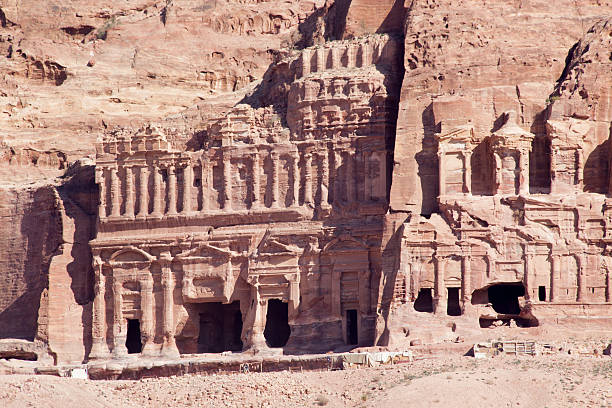
Introduction
Nestled amidst the rugged beauty of southern Petra-jordan, Petra stands as a testament to the ancient ingenuity and architectural prowess of its creators. The rose-red city, known as “The Lost City of Petra-jordan,” is a UNESCO World Heritage Site and one of the New Seven Wonders of the World. In this article, we’ll embark on a journey to explore the fascinating history of Petra, answering key questions such as when it was built and how long it took to construct this mesmerizing wonder.
When Was Petra-jordan Built?
Petra’s origins can be traced back to the Nabataeans, an industrious Arab people who settled in the region around the 6th century BCE. The city’s construction is believed to have commenced during the 4th century BCE, reaching its zenith during the 1st century CE. The Nabataeans, skilled builders and traders, carved the city directly into the rose-red cliffs of southern Jordan. Petra’s strategic location along ancient trade routes contributed to its prosperity and cultural richness.
How Long Did It Take to Build Petra-jordan?
The construction of Petra was a gradual process that unfolded over several centuries. While it is challenging to pinpoint an exact timeline for the city’s completion, historians estimate that the initial phases of carving and constructing Petra began in the 4th century BCE. The city continued to evolve and expand for several centuries, with significant contributions made during the Hellenistic and Roman periods.
The sheer scale of Petra’s architectural marvels, including the iconic Al-Khazneh (The Treasury) and the Monastery, suggests a sustained effort over a considerable period. The elaborate rock-cut facades, intricate tombs, and ingenious water management system all point to the dedication and craftsmanship of the Nabataeans. It’s safe to say that Petra’s construction was a testament to the long-term vision and determination of its builders.
Key Architectural Marvels of Petra
Al-Khazneh (The Treasury): Arguably the most iconic structure in Petra, the Treasury is a magnificent temple carved into the rose-red cliffs. Its intricate façade, adorned with classical architectural elements, has captured the imagination of visitors for centuries.
The Monastery (Ad Deir): Situated high in the mountains, the Monastery is another awe-inspiring achievement of Nabataean architecture. The journey to reach this colossal structure involves a trek through the Siq, a narrow canyon that builds anticipation for the grand reveal.
The Siq: The main entrance to Petra, the Siq is a narrow gorge flanked by towering cliffs. As visitors traverse this natural corridor, they are treated to glimpses of Petra’s wonders, culminating in the breathtaking sight of Al-Khazneh.
Visiting Petra Today
Petra continues to captivate the imaginations of travelers from around the world. Today, the site is carefully preserved, allowing visitors to explore its ancient wonders while marveling at the engineering brilliance of the Nabataeans. To make the most of your visit, consider hiring a local guide who can provide insights into the history, culture, and significance of each structure.
In conclusion, Petra’s construction spanned centuries, with the Nabataeans leaving behind a legacy that has endured the test of time. As we wander through the narrow Siq and stand before the towering facades, we are transported back in time, witnessing the splendor of a city carved into the heart of the Jordanian desert
